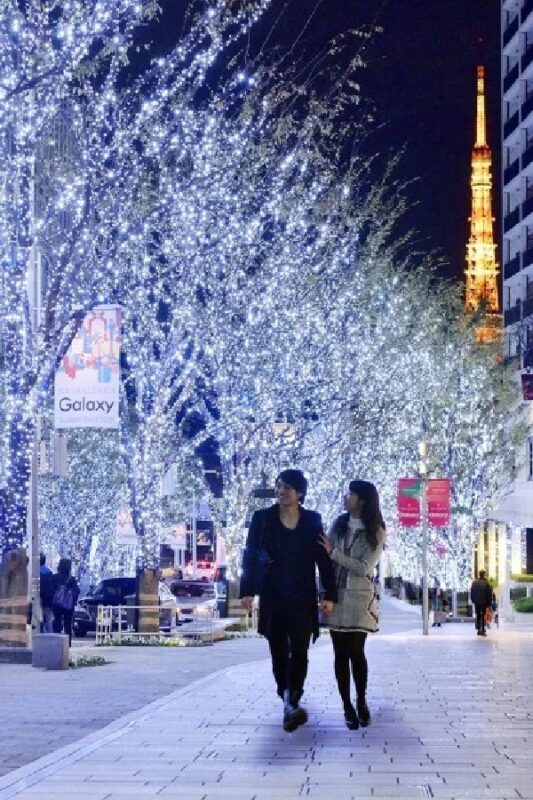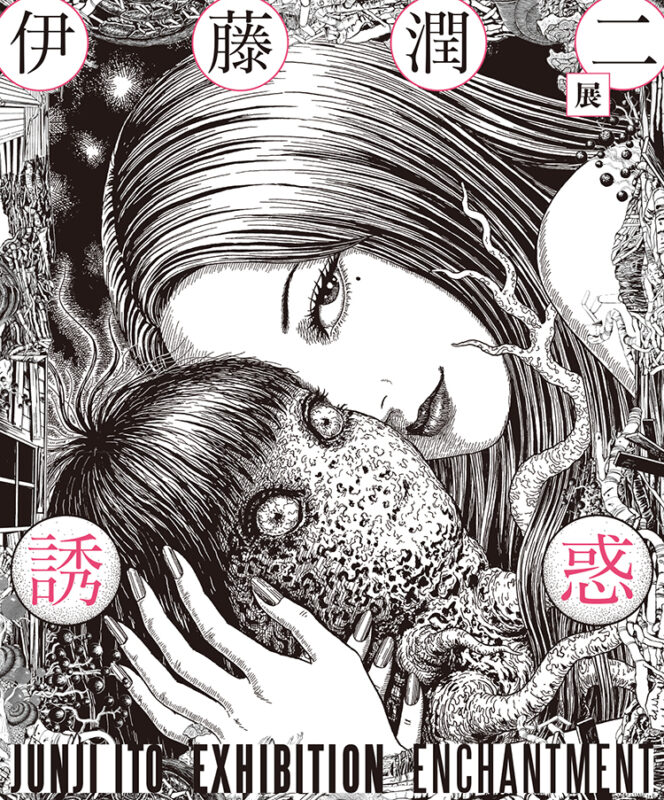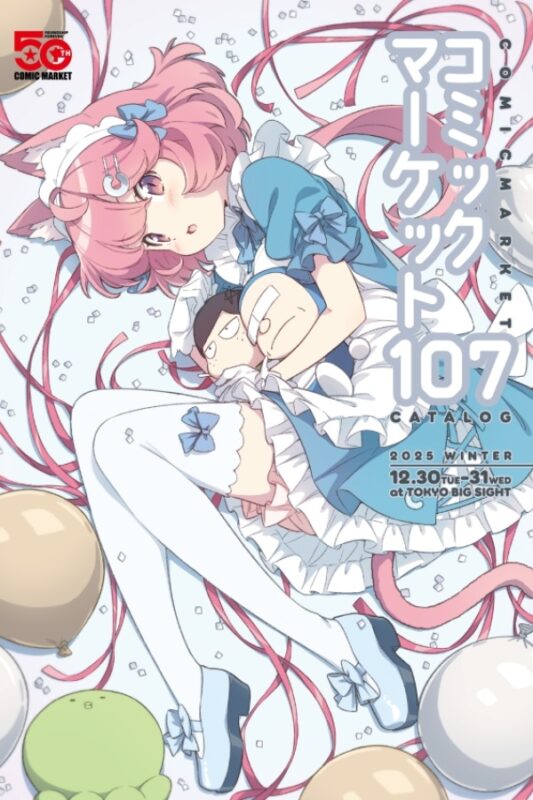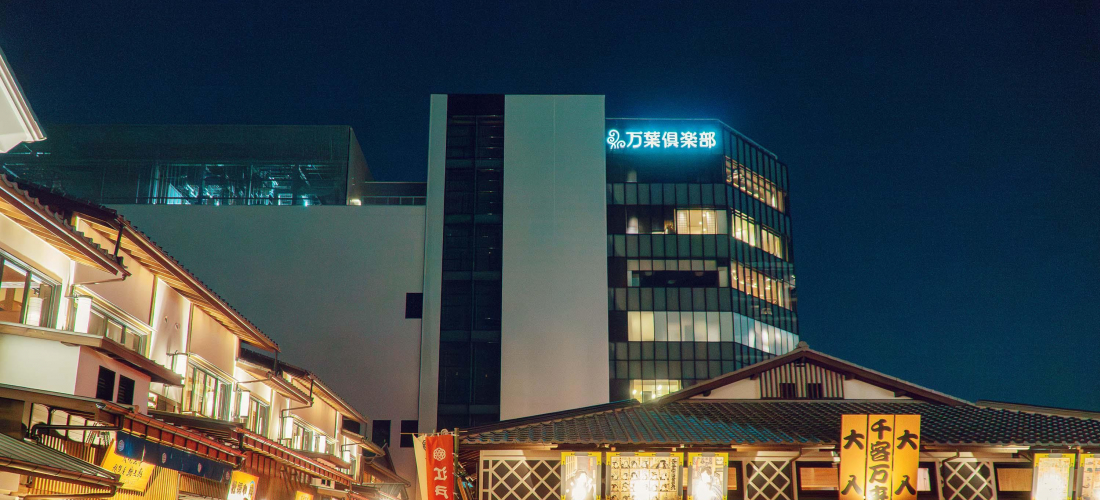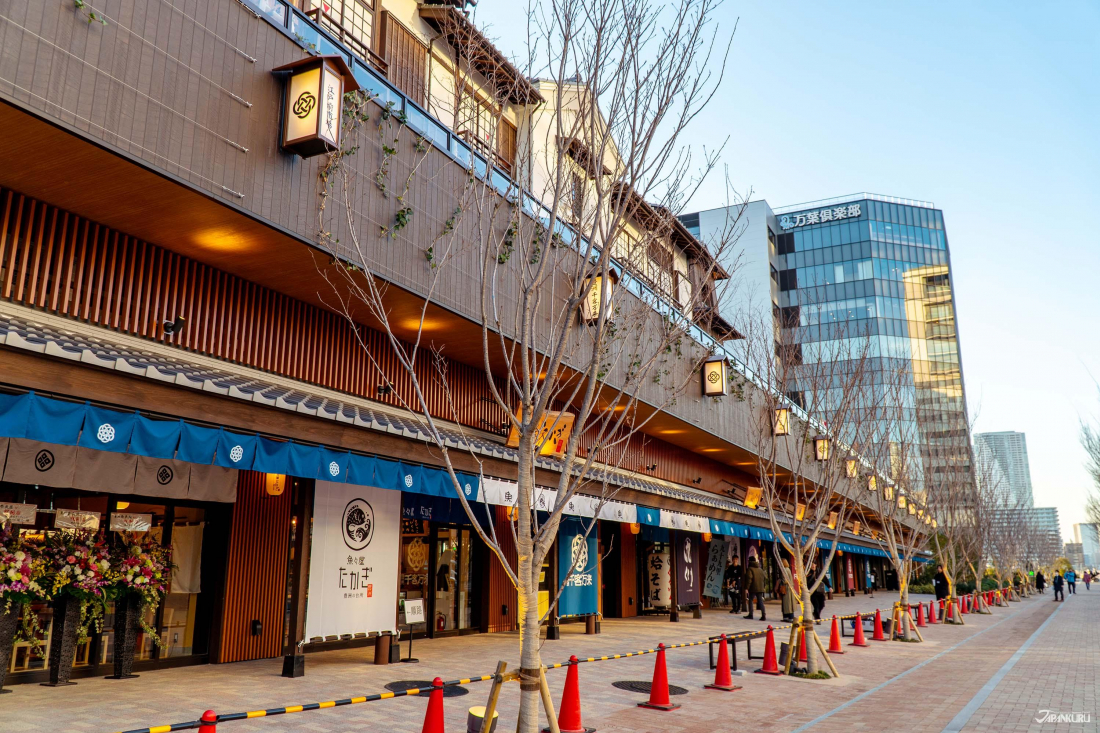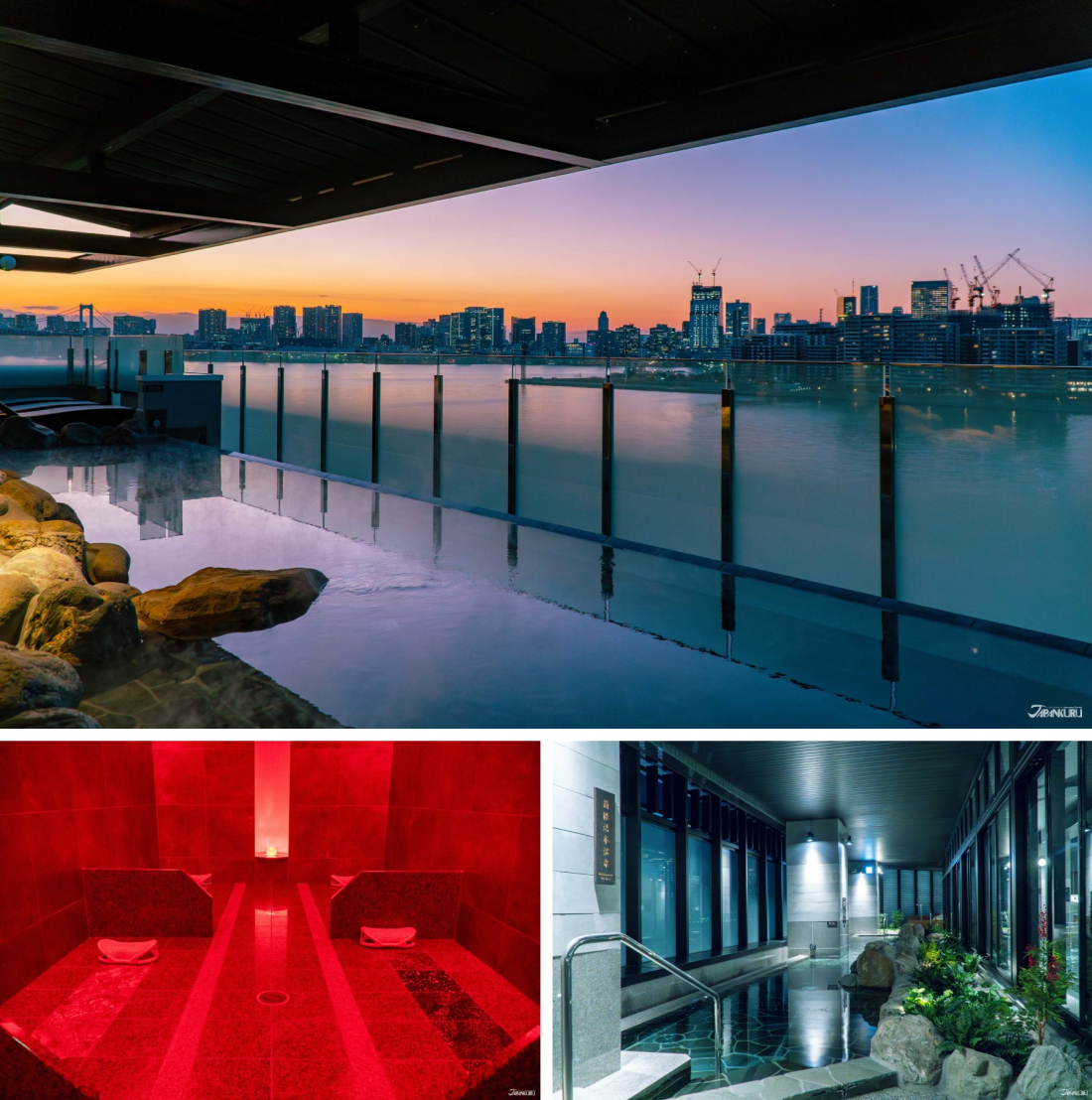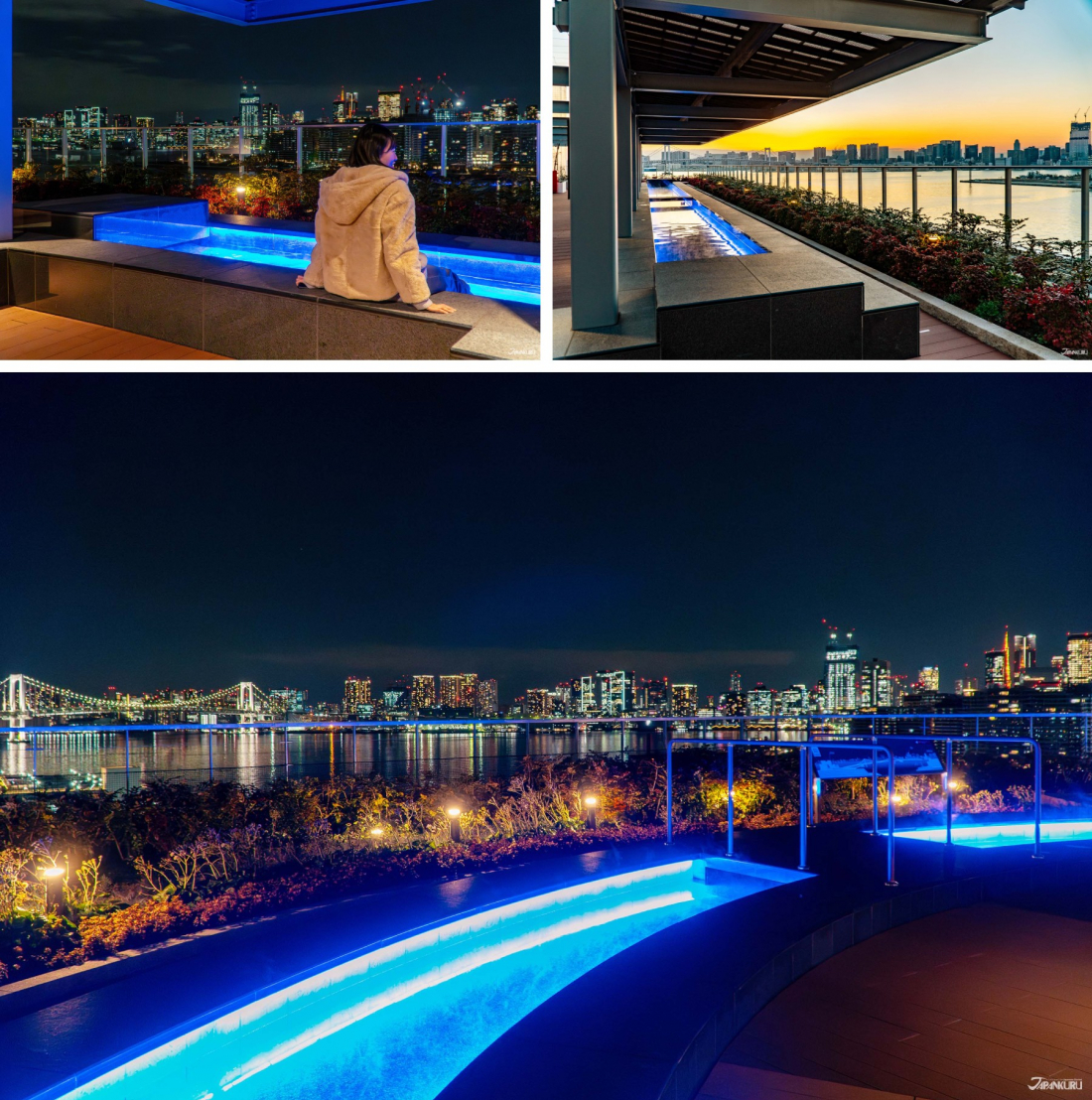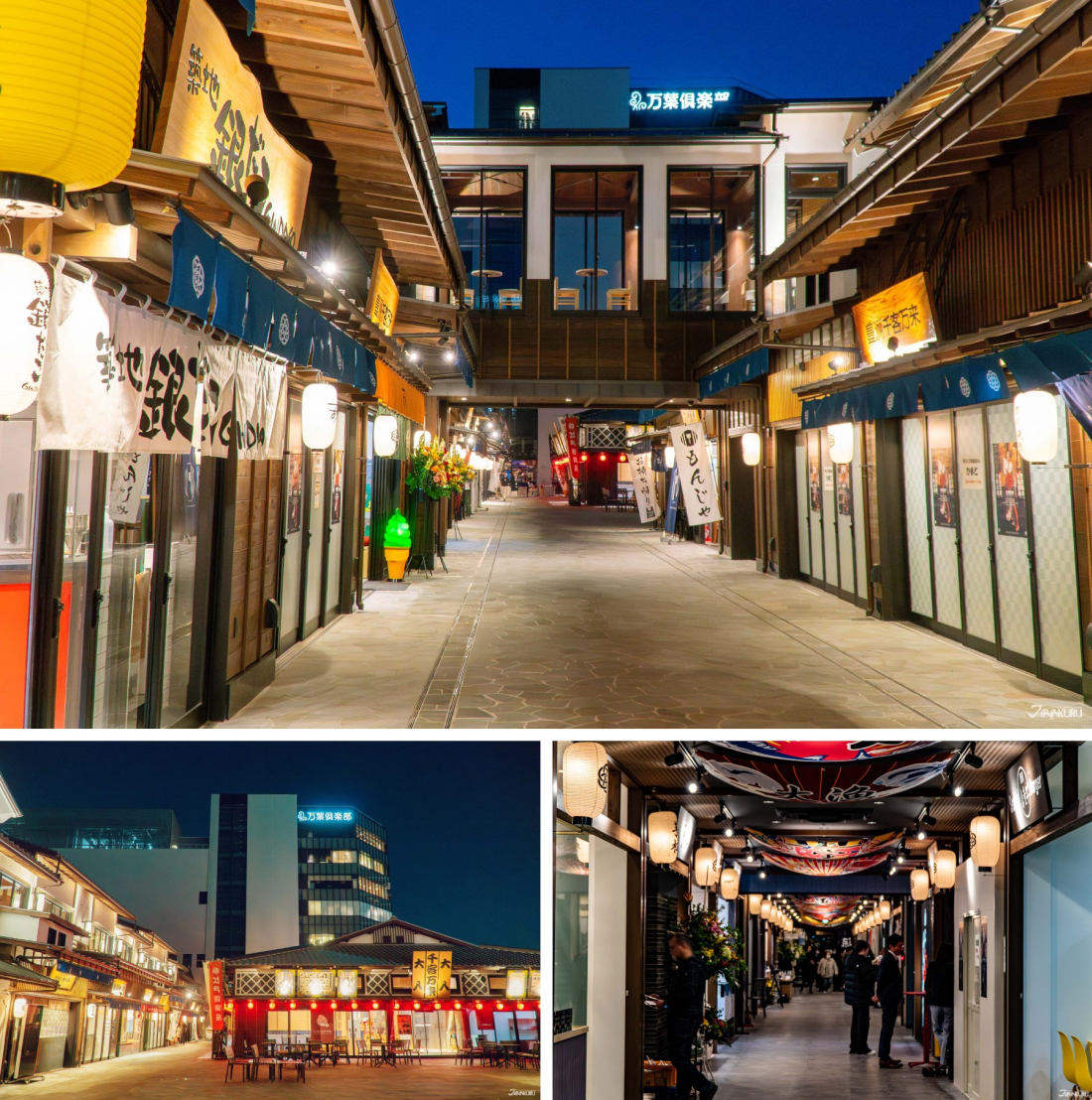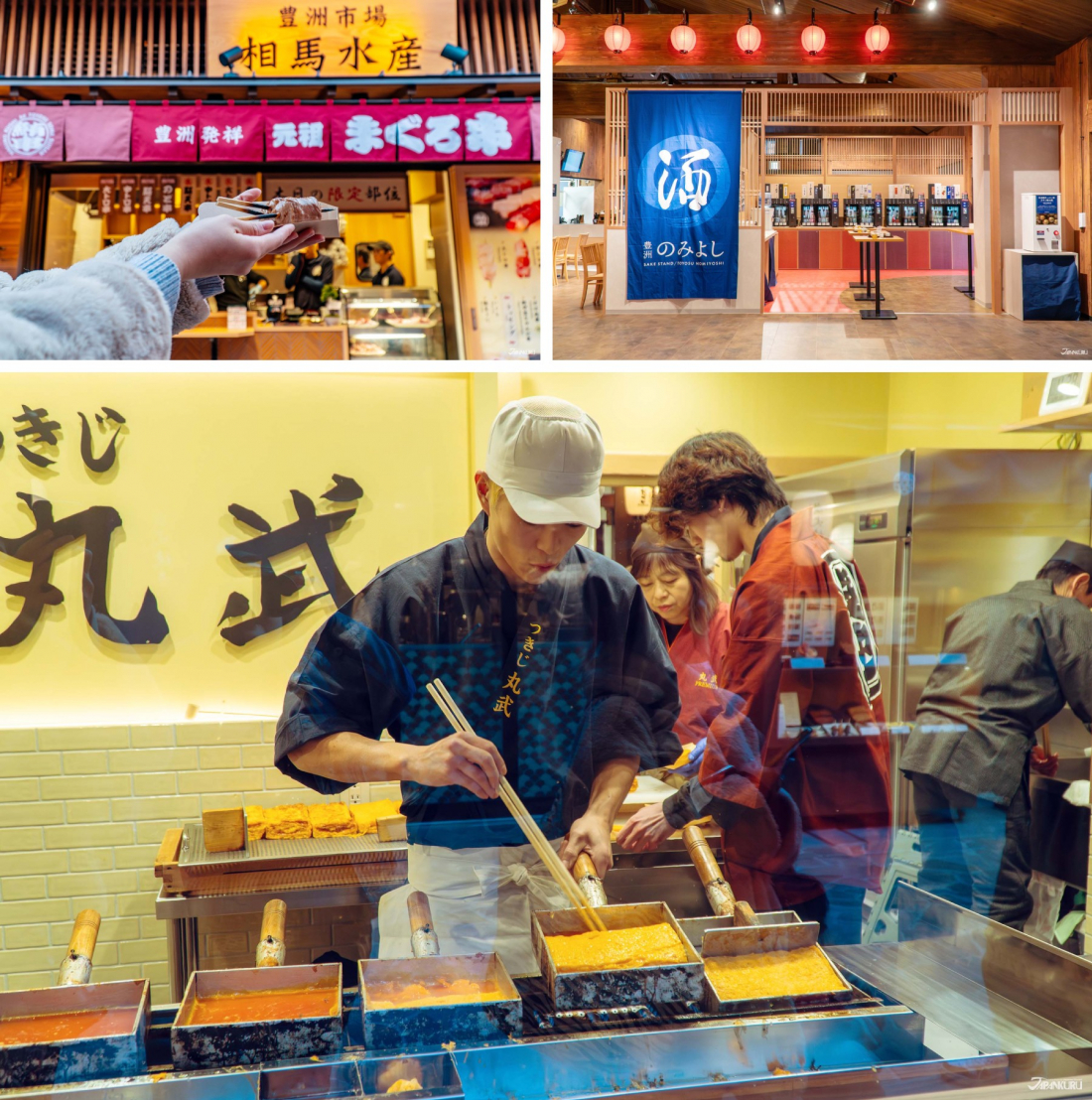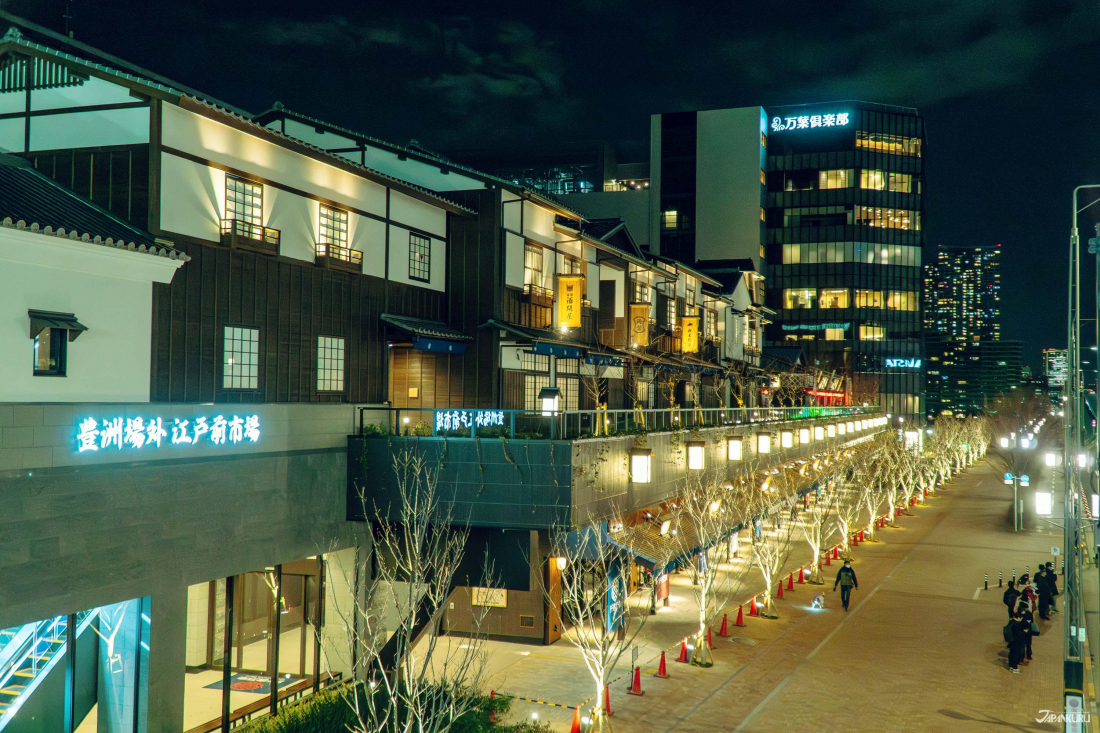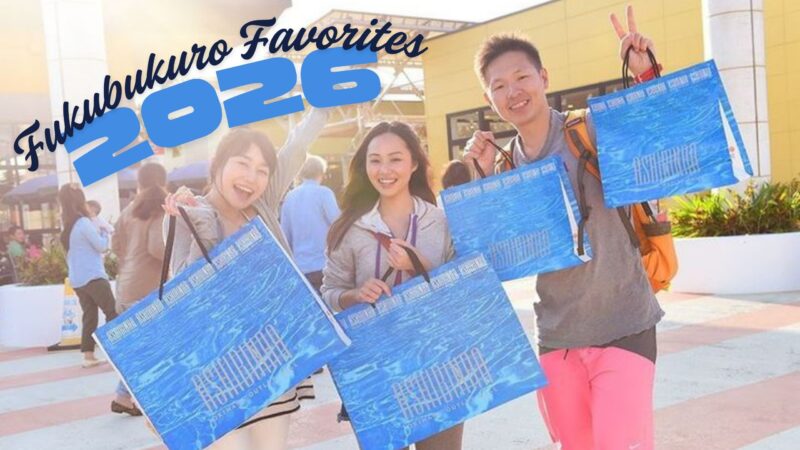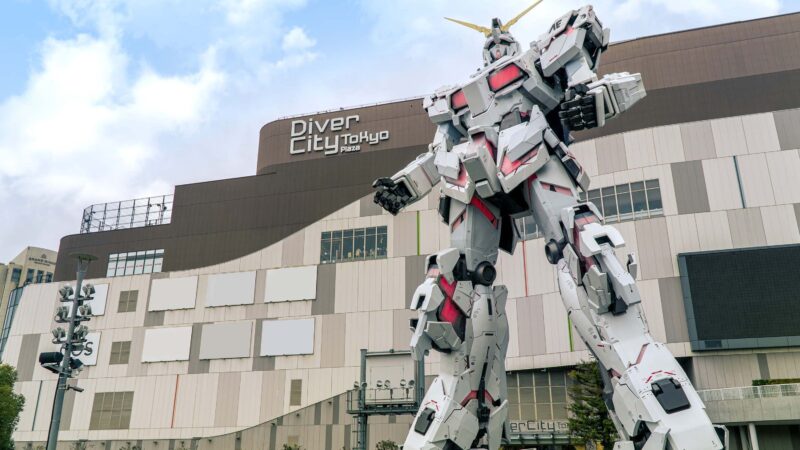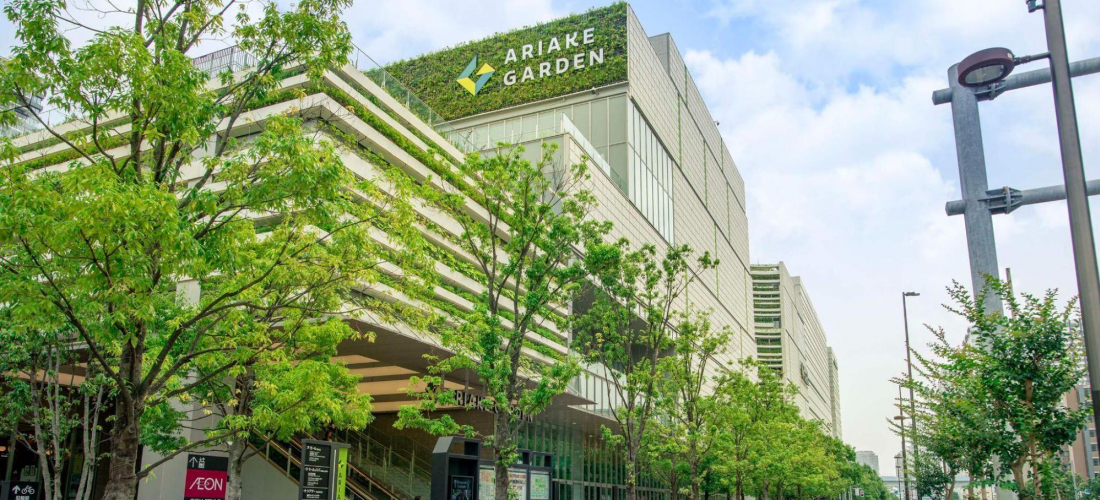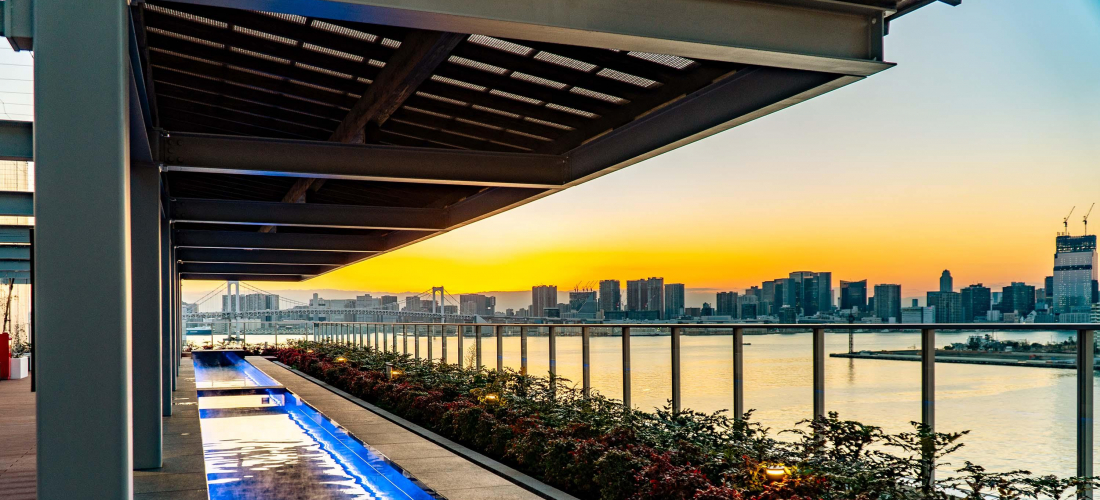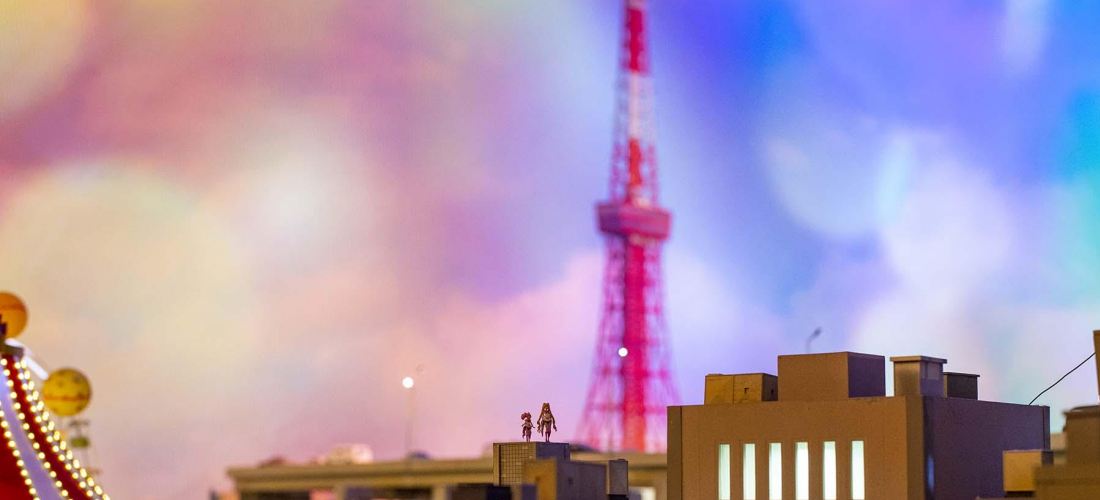CONTENTS
This new Tokyo destination has real onsen facilities in the city, a huge number of fresh food options, and a unique festive atmosphere, making it the newest thing to see in Toyosu, and a fresh attraction near Odaiba. Things are heating up on Tokyo Bay with this fun addition next to the Toyosu fish market!
Toyosu Sightseeing: A Fish Market, TeamLab, and Now Senkyaku Banrai
Toyosu takes up a portion of Tokyo's man-made islands reaching out into the bay, and while the neighborhood is often overshadowed by the neighboring Odaiba, the Tokyo Olympics and city projects have spurred Toyosu and nearby Ariake into a wave of new development in recent years. In the short time since the end of covid-era lockdowns, these artificial islands in Tokyo Bay have started to attract waves of visitors to new shopping facilities and museums, alongside better-known destinations like the Toyosu Fish Market (the successor to the one in Tsukiji) and TeamLab Planets (which seems to no longer be "temporary"). Now, the newest addition to Toyosu introduces entertainment and dining options that are totally new to the area, in the form of Senkyaku Banrai. Check out the newest big addition to Tokyo to find two big buildings with a lot to boast about: a hot spring spa and a restaurant building with its own market straight from the history books!
Toyosu Senkyaku Banrai (豊洲 千客万来)
6−5−5 Toyosu, Koto City, Tokyo
Official Website (en)
Tokyo Toyosu Manyo Club
For the many travelers who visit Tokyo in hopes of seeing all Japan has to offer, perhaps the biggest struggle is the classic Japanese onsen. These communal baths are a part of traditional Japanese culture, said to cure illnesses… or at least soak away the fatigue of a long day on your feet. But in Tokyo, genuine hot spring baths are few and far between, so this new location of the hot spring spa chain Manyo Club is a treat for Tokyo locals and visitors alike. The enormous spa building has 9 floors of facilities, including indoor and open-air shared baths, a collection of smaller private "family" baths, multiple varieties of sauna and "hot bedrock bath," massage chairs and real massages, plus multiple relaxation rooms. The onsen facilities are open 24 hours a day, and there are even a handful of guestrooms for those who want to stay the night! Since Tokyo doesn't have a lot of its own hot springs, the facility's genuine onsen water is actually brought in daily from famous Japanese springs like Hakone and Yugawara, so you can enjoy the full onsen experience without ever leaving Tokyo.
▶︎ Like most Japanese hot spring spas, the situation does get a bit sticky for guests with tattoos. Smaller pieces can be covered with large bandaids, but anyone with full sleeves or anything difficult to cover up with a few patches will be asked to stick to using the private baths.
Tokyo Toyosu Manyo Club even has something to offer visitors who don't plan to spend all day soaking in the baths: more than one foot bath with a view. The building has two different foot baths, also filled with real hot spring water, each looking out at a spectacular view of the Tokyo Bay area, including Rainbow Bridge and even a glimpse of Tokyo Tower. On the roof, a special footbath with a 360° panoramic view is available only to paying visitors at the baths. But the 8th-floor footbath, with its own great view, is available to all visitors entirely for free – perfect for taking a little break from all the walking that a trip to Tokyo entails. For an extra relaxing experience, you can even grab something to drink at the cafe next to the footbath.
Tokyo Toyosu Manyo Club (東京豊洲 万葉倶楽部)
Hours:
Main Facilities: 24 hours
Free Foot Bath: 10:00 – 19:00
Admission: adults 3,850 yen | children 1,400~2,000 yen | additional fee required for use after 3 am
Official Website (en)
The Edo Market
When the plans for Toyosu Senkyaku Banrai were first proposed, the developers envisioned the facility as a new incarnation of the Tsukiji outer market, where restaurants and other shops took advantage of the fresh Tsukiji Market ingredients to offer sushi and more. For better or for worse, a pandemic and other delays got in the way of bringing the specifics of that plan to life, but you can still see hints of it in the finished facility. The second half of the two-building Senkyaku Banrai complex is the Toyosu Jogai Edomae Ichiba (豊洲場外江戸前市場), or the Edo-Style Market, and it really is built to look like something from Japan's Edo era (1603-1868). With three floors and about 65 shops, this building is mostly dedicated to food and drinks, and the entire second floor is built to resemble a market from the days when samurai roamed the streets of Japan. Outside, counters function like market stalls, offering classic Japanese street food to match the market atmosphere. Inside, casual restaurants with counter seating are lined up next to shops offering gourmet groceries that make great souvenirs. Some of the shops and restaurants are indeed the same ones once found in Tsukiji! Others offer new delicacies, dreamed up for sale specifically at Senkyaku Banrai.
With all the fresh ingredients available literally next-door at the Toyosu Market, Senkyaku Banrai's goal is to offer fresh, authentic Japanese food with all the delicious flavors of the market. The dining and entertainment building is uniquely built with modern steel-frame construction at the base, and traditional Japanese wood construction on the top floors for those traditional Japanese vibes, letting the three floors deliver on their goals in three different ways. The first floor is dedicated to casual restaurants, which are good for sightseers, but also chosen with locals looking for a quick and tasty lunch in mind. The third floor focuses on sushi in all different forms and flavors, but also restaurants offering other traditional Japanese dishes. The second floor, as mentioned above, is like a whole Edo-era market, perfect for anyone looking to try some Japanese street food.
Try the classic Japanese-style omelettes from Marutake (originally one of the more popular stops at Tsukiji Market) to enjoy the lightly sweet flavor and fluffy texture – made at Senkyaku Banrai with special premium eggs, and offered nowhere else. Or stop by the counter of Toyosu Market tuna specialists Soma Suisan for fresh maguro grilled to perfection for a melt-in-your-mouth texture. There are quite a few different food options to enjoy at this open-air market, and you can wash it all down at the Toyosu Nomiyoshi sake stand. Get your ochoko (sake cup) and tokens from the gashapon machine, then use the automatic dispensers to do your own custom sake tasting!
Toyosu Jogai Edomae Ichiba (豊洲場外江戸前市場)
Hours:
1F Restaurants: 9:00 – 18:00
2F Inside Area: 9:00 – 18:00
2F Outside Area: 10:00 – 22:00
3F Restaurants: 10:00 – 22:00
*Some shop hours may vary.
Toyosu Senkyaku Banrai
Toyosu is a neighborhood on the rise, and with the arrival of Toyosu Senkyaku Banrai, it now has a destination for anyone looking to enjoy a little traditional Japanese culture – with a dash of modern convenience. If you want to spend the day at a Japanese onsen without leaving Tokyo, stuff your face with tons of great Japanese street food in one convenient location, or just stop in for lunch after a visit to TeamLab planets for a meal made with ingredients fresh from Toyosu Market, this new Tokyo destination is worth a visit!
For more info and updates from Japan, check Japankuru for new articles, and don't forget to follow us on X (Twitter), Instagram, and Facebook!
COMMENT
FEATURED MEDIA
VIEW MORE 
A New Tokyo Animal Destination: Relax & Learn About the World’s Animals in Japan
#pr #japankuru #anitouch #anitouchtokyodome #capybara #capybaracafe #animalcafe #tokyotrip #japantrip #카피바라 #애니터치 #아이와가볼만한곳 #도쿄여행 #가족여행 #東京旅遊 #東京親子景點 #日本動物互動體驗 #水豚泡澡 #東京巨蛋城 #เที่ยวญี่ปุ่น2025 #ที่เที่ยวครอบครัว #สวนสัตว์ในร่ม #TokyoDomeCity #anitouchtokyodome

Shohei Ohtani Collab Developed Products & Other Japanese Drugstore Recommendations From Kowa
#pr #japankuru
#kowa #syncronkowa #japanshopping #preworkout #postworkout #tokyoshopping #japantrip #일본쇼핑 #일본이온음료 #오타니 #오타니쇼헤이 #코와 #興和 #日本必買 #日本旅遊 #運動補充能量 #運動飲品 #ช้อปปิ้งญี่ปุ่น #เครื่องดื่มออกกำลังกาย #นักกีฬา #ผลิตภัณฑ์ญี่ปุ่น #อาหารเสริมญี่ปุ่น

도쿄 근교 당일치기 여행 추천! 작은 에도라 불리는 ‘가와고에’
세이부 ‘가와고에 패스(디지털)’ 하나면 편리하게 이동 + 가성비까지 완벽하게! 필름카메라 감성 가득한 레트로 거리 길거리 먹방부터 귀여움 끝판왕 핫플&포토 스폿까지 총집합!
Looking for day trips from Tokyo? Try Kawagoe, AKA Little Edo!
Use the SEIBU KAWAGOE PASS (Digital) for easy, affordable transportation!
Check out the historic streets of Kawagoe for some great street food and plenty of picturesque retro photo ops.
#pr #japankuru #도쿄근교여행 #가와고에 #가와고에패스 #세이부패스 #기모노체험 #가와고에여행 #도쿄여행코스 #도쿄근교당일치기 #세이부가와고에패스
#tokyotrip #kawagoe #tokyodaytrip #seibukawagoepass #kimono #japantrip

Hirakata Park, Osaka: Enjoy the Classic Japanese Theme Park Experience!
#pr #japankuru #hirakatapark #amusementpark #japantrip #osakatrip #familytrip #rollercoaster #retrôvibes #枚方公園 #大阪旅遊 #關西私房景點 #日本親子旅行 #日本遊樂園 #木造雲霄飛車 #히라카타파크 #สวนสนุกฮิราคาตะพาร์ค

🍵Love Matcha? Upgrade Your Matcha Experience With Tsujiri!
・160년 전통 일본 말차 브랜드 츠지리에서 말차 덕후들이 픽한 인기템만 골라봤어요
・抹茶控的天堂!甜點、餅乾、飲品一次滿足,連伴手禮都幫你列好清單了
・ส่องมัทฉะสุดฮิต พร้อมพาเที่ยวร้านดังในอุจิ เกียวโต
#pr #japankuru #matcha #matchalover #uji #kyoto #japantrip #ujimatcha #matchalatte #matchasweets #tsujiri #말차 #말차덕후 #츠지리 #교토여행 #말차라떼 #辻利抹茶 #抹茶控 #日本抹茶 #宇治 #宇治抹茶 #日本伴手禮 #抹茶拿鐵 #抹茶甜點 #มัทฉะ #ของฝากญี่ปุ่น #ชาเขียวญี่ปุ่น #ซึจิริ #เกียวโต

・What Is Nenaito? And How Does This Sleep Care Supplement Work?
・你的睡眠保健品——認識「睡眠茶氨酸錠」
・수면 케어 서플리먼트 ‘네나이토’란?
・ผลิตภัณฑ์เสริมอาหารดูแลการนอน “Nenaito(ネナイト)” คืออะไร?
#pr #japankuru #sleepcare #japanshopping #nenaito #sleepsupplement #asahi #睡眠茶氨酸錠 #睡眠保健 #朝日 #l茶胺酸 #日本藥妝 #日本必買 #일본쇼핑 #수면 #건강하자 #네나이토 #일본영양제 #อาหารเสริมญี่ปุ่น #ช้อปปิ้งญี่ปุ่น #ร้านขายยาญี่ปุ่น #ดูแลตัวเองก่อนนอน #อาซาฮิ

Japanese Drugstore Must-Buys! Essential Items from Hisamitsu® Pharmaceutical
#PR #japankuru #hisamitsu #salonpas #feitas #hisamitsupharmaceutical #japanshopping #tokyoshopping #traveltips #japanhaul #japantrip #japantravel

Whether you grew up with Dragon Ball or you just fell in love with Dragon Ball DAIMA, you'll like the newest JINS collab. Shop this limited-edition Dragon Ball accessory collection to find some of the best Dragon Ball merchandise in Japan!
>> Find out more at Japankuru.com! (link in bio)
#japankuru #dragonball #dragonballdaima #animecollab #japanshopping #jins #japaneseglasses #japantravel #animemerch #pr

This month, Japankuru teamed up with @official_korekoko to invite three influencers (originally from Thailand, China, and Taiwan) on a trip to Yokohama. Check out the article (in Chinese) on Japankuru.com for all of their travel tips and photography hints - and look forward to more cool collaborations coming soon!
【橫濱夜散策 x 教你怎麼拍出網美照 📸✨】
每次來日本玩,是不是都會先找旅日網紅的推薦清單?
這次,我們邀請擁有日本豐富旅遊經驗的🇹🇭泰國、🇨🇳中國、🇹🇼台灣網紅,帶你走進夜晚的橫濱!從玩樂路線到拍照技巧,教你怎麼拍出最美的夜景照。那些熟悉的景點,換個視角說不定會有新發現~快跟他們一起出發吧!
#japankuru #橫濱紅磚倉庫 #汽車道 #中華街 #yokohama #japankuru #橫濱紅磚倉庫 #汽車道 #中華街 #yokohama #yokohamaredbrickwarehouse #yokohamachinatown

If you’re a fan of Vivienne Westwood's Japanese designs, and you’re looking forward to shopping in Harajuku this summer, we’ve got important news for you. Vivienne Westwood RED LABEL Laforet Harajuku is now closed for renovations - but the grand reopening is scheduled for July!
>> Find out more at Japankuru.com! (link in bio)
#japankuru #viviennewestwood #harajuku #omotesando #viviennewestwoodredlabel #viviennewestwoodjapan #비비안웨스트우드 #오모테산도 #하라주쿠 #日本購物 #薇薇安魏斯伍德 #日本時尚 #原宿 #表參道 #japantrip #japanshopping #pr

Ready to see TeamLab in Kyoto!? At TeamLab Biovortex Kyoto, the collective is taking their acclaimed immersive art and bringing it to Japan's ancient capital. We can't wait to see it for ourselves this autumn!
>> Find out more at Japankuru.com! (link in bio)
#japankuru #teamlab #teamlabbiovortex #kyoto #kyototrip #japantravel #artnews
Photos courtesy of teamLab, Exhibition view of teamLab Biovortex Kyoto, 2025, Kyoto ® teamLab, courtesy Pace Gallery

Japanese Makeup Shopping • A Trip to Kamakura & Enoshima With Canmake’s Cool-Toned Summer Makeup
#pr #canmake #enoshima #enoden #에노시마 #캔메이크 #japanesemakeup #japanesecosmetics

⚔️The Robot Restaurant is gone, but the Samurai Restaurant is here to take its place. Check it out, and don't forget your coupon!
🍣신주쿠의 명소 로봇 레스토랑이 사무라이 레스토랑으로 부활! 절찬 쿠폰 발급중
💃18歲以上才能入場的歌舞秀,和你想的不一樣!拿好優惠券去看看~
#tokyo #shinjuku #samurairestaurant #robotrestaurant #tokyotrip #도쿄여행 #신주쿠 #사무라이레스토랑 #이색체험 #할인이벤트 #歌舞伎町 #東京景點 #武士餐廳 #日本表演 #日本文化體驗 #japankuru #japantrip #japantravel #japanlovers #japan_of_insta

Japanese appliance & electronics shopping with our KOJIMA x BicCamera coupon!
用JAPANKURU的KOJIMA x BicCamera優惠券買這些正好❤️
코지마 x 빅 카메라 쿠폰으로 일본 가전 제품 쇼핑하기
#pr #japankuru #japanshopping #kojima #biccamera #japaneseskincare #yaman #dji #osmopocket3 #skincaredevice #日本購物 #美容儀 #相機 #雅萌 #日本家電 #일본여행 #면세 #여행꿀팁 #일본쇼핑리스트 #쿠폰 #일본쇼핑 #일본브랜드 #할인 #코지마 #빅카메라 #japankurucoupon
MAP OF JAPAN
SEARCH BY REGION

LATEST
VIEW MOREEVENT CALENDAR
VIEW MORE
